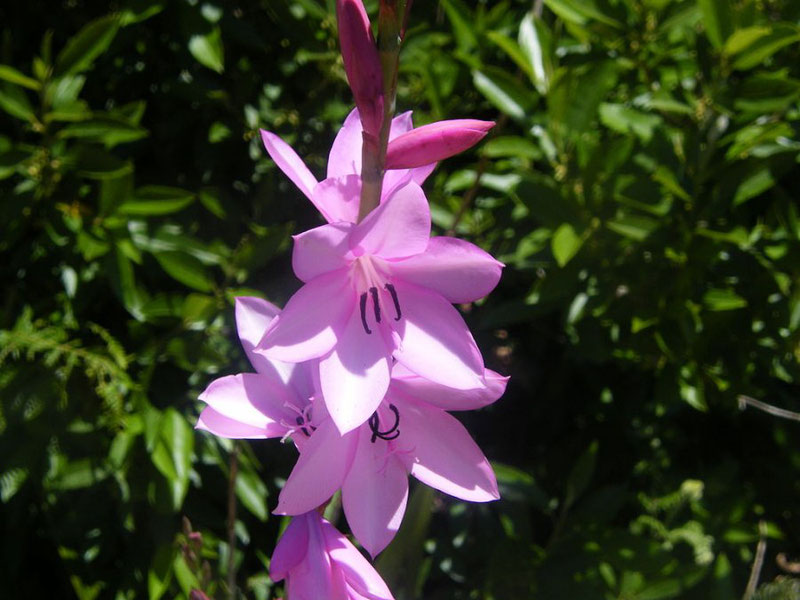Watsonia borbonica
 Image: Andrew massyn
Image: Andrew massyn
Description
This magnificent bulbous plant with tall spikes of rose-pink, trumpet-shaped flowers makes a picturesque display, flowering for up to 4 or 5 weeks - a beautiful garden subject that needs little maintenance.Watsonia borbonica is particularly abundant after fires and is known at some sites to only flower in the first and second years following a fire. Abundant flowering after a fire is followed by the production of masses of seed, which increases the number of successful seedlings. In areas that have burnt, Watsonia borbonica provides a major source of food for nectar-feeding insects and birds, and for the various rodents that eat the seed produced.
Watsonia borbonica is pollinated by large, solitary bees, mainly of the family Apidae: subfamily Anthophorinae. The bees visit the flowers in the early morning, seeking nectar and collecting pollen from flowers that have just opened.
Sunbirds have been seen to visit the flowers as well, but soon lose interest, probably because only a small amount of nectar is produced. Long- tongued flies also visit and may play a role in pollination .
Watsonia borbonica is tough and easy to grow, with a long flowering period. It will continue to flower regularly as long as the corms do not become too crowded. It does best in full sun in well-drained, well-composted soil and although adapted to a winter rainfall climate, will thrive under summer rainfall conditions provided it is grown in well-drained soil. It needs occasional feeding during the growing season (autumn-winter-spring) with small doses of preferably organic fertilizer with a high concentration of potash-overfeeding results in too much leaf and fewer flowers.
Propagation instructions - cuttings
Watsonia borbonica produces offsets (daughter corms) abundantly, and the easiest method of propagation is by division. Clumps can be lifted and divided at any time during the dormant season (December-April) and re-planted in autumn (March-April). After lifting, the corm must be stored in a cool, dry place or re-planted immediately to avoid mealy bug infestation.
Use a well-drained soil, e.g. a mixture of coarse sand and finely milled bark. Corms should be planted at a depth of approximately half their diameter, 40-60 mm deep. In the winter rainfall area the rains begin in autumn (usually around the beginning of April). Pot grown plants should be watered sparingly at this time, and after they have sprouted, the soil should be kept moist but not damp-the corms are not that sensitive to drying out but if kept too wet they may rot. Corms will flower within a few months of planting.
Propagation instructions - seeds
Seed is sown in autumn, from April until June, thinly, in deep (min. 10 cm) seed trays, to allow for root development. The soil medium should be well drained, a recommended mix being 2 parts sand : 2 parts compost : 1 part loam or equal parts sand and compost, and the seeds should be planted 3-4 mm deep, covered with clean sand and kept moist and lightly shaded.
It is also advisable to protect them from rain during this period. Seed germinates readily within 3 to 4 weeks. Watering should be reduced towards the end of the growing season and withheld completely when they are dormant, resuming only in the autumn. The plants should flower in their second or third year.
Sources and references
Scientific name
Watsonia borbonica
Common name(s)
Pink watsonia
